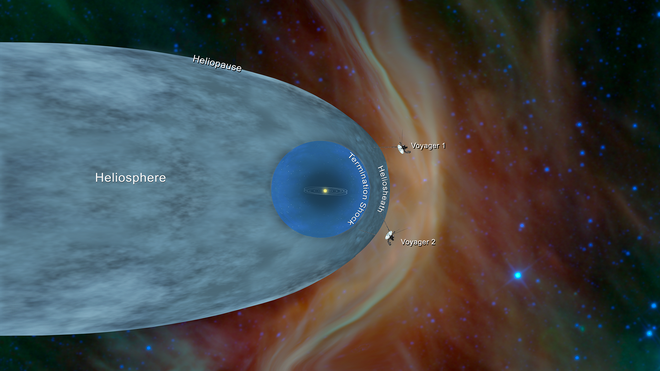From data from the IBEX Space Telescope, we know how the shape of the shield protects life.
In 2009, astronomers used NASA’s Interstellar Boundary Exploration Telescope (IBEX) to observe a space object with a long curved band structure in the vacuum between the solar system and deep space. They named this strange object the IBEX Tape – IBEX Tape.
The ribbon, invisible to both telescopes and the naked eye, is one of the objects that could give us a better idea of the heliosphere, the bubble-shaped structure made up of the solar wind that winds around the solar system.
New research published in the journal Astrophysical publishes the first computer reconstruction of the IBEX ribbon, and the newly obtained data will lead to discoveries regarding the impact of the Sun on Earth’s planets near celestial bodies.

“Most instruments that detect particles in space will detect the presence of charged particles,” said Daniel Reisenfeld, principal investigator at the Los Alamos National Laboratory and principal author of the research notice. However, IBEX is more special than the rest.
This space telescope can detect energy neutral atoms or ENA, ions that escape from the Sun, collide with electrons in space, and fall into a neutral state. These atoms are abundant in space, and researchers can use the ENA to image objects in space.
Astronomers have long viewed the IBEX tape as a broad band of ENA shining in space. Using the IBEX telescope, the experts combined the data from the ENA with the transition period of the solar magnetic field (every 11 years) and constructed a 3D map of the entire heliosphere. According to Professor Reisenfeld, this “invisible bubble” protects the planets in the system from harmful radiation.
“Our Earth is constantly being bounced back by cosmic rays, galactic rays,” he said. These rays may slightly affect aircraft traveling in subpolar airspace, especially on routes between Europe, Asia and the Americas. Scientists say that in order to understand the heliosphere of other stars, we must first understand the heliosphere of the Sun.
“Science is developing a lot of physical models based on IBEX data,” explains space science professor Nikolai Pogorelov at the University of Alabama, adding that it is not a pilot project, which will have practical applications.
The map created by Professor Reisenfeld’s team is not an exact model of the heliosphere, which is the backbone of the promotion of research related to the Sun. According to scientist Roshanak Hakimzadeh of NASA’s Heliosphere Department, future spacecraft can build on IBEX’s current success to learn more about the Sun’s rotation, detect solar storm flares and weather forecasts space.
It is not clear if today’s effort to study the Sun will help us understand the nature of the universe, but at least these are important facts that help us predict the evolutionary path of the star. powerhouse that helps life exist.


